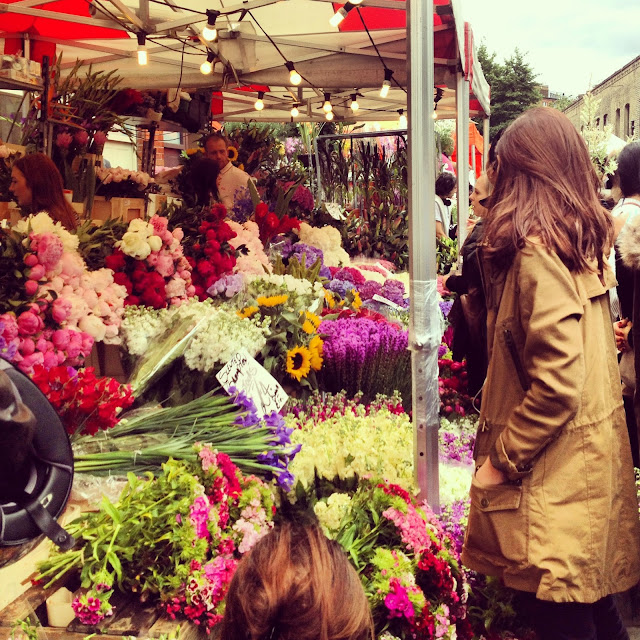Welcome to Knole!
Knole was built in 1460 for the Archbishop of Canterbury, Thomas Bourchier. He chose the location because of its ideal distance between London and Canterbury and the abundant land allowed him to create a deer hunting park, the ultimate medieval status symbol in the 15th century (one had to have a permit from the king to have a deer park, so it showed off how well-connected you were)
I had no idea how extensive this deer park was...it is huge! After taking a bus from the train station to the edge of the park, I walked at least 10 minutes through a heavily wooded trail...started out paved but quickly turned to dirt.
which eventually led me to a grassy valley, complete with tons of little fawns!
I continued on up a gravel path and finally Knole opened up in front of me.
(I was loving the deer)
Moving on in history, the castle was kept in the hands of whoever was the current Archbishop of Canterbury until Henry VIII. In 1538, Thomas Cranmer "gave" the king this residence.
During the reign of Elizabeth I (daughter of Henry VIII), Thomas Sackville, her cousin, managed to take over possession through some wheeling and dealing at court. The Earls, Dukes, and Barons of the Sackville family have lived here ever since.
Most notable among the Sackville family is perhaps Vita Sackville-West, friend and lover of Virginia Woolf. Woolf's novel Orlando draws on the history of the Sackville-West ancestors. Also interesting - The Other Boleyn Girl was filmed here!
Here is a look at the interiors...
This is one of the three "long galleries" ...during the winter months, ladies would walk up and down these for exercise.
Good old Henry's portrait is here (along with portraits of the family) - having his portrait showed your loyalty and connections to him.
Knole is particularly famous for its intact furniture - original fabric literally from the 16th/17th c.
This girl below is really interesting...Giovanna Baccelli was a ballet dancer and the lover of the 3rd Duke. He brought her to Knole in 1779 as his mistress. She was well-known in London society, if only for her scandalous life, and was painted by Gainsborough - her full-length portrait is at the Tate Britain here in London.
This (below) was also interesting - one of the tapestries is gone for restoration, so the wooden wall was visible - its very rare to see undecorated surfaces in these houses and gives you an idea of how the house was constructed.
below -- one of only 2 sets of PURE silver furniture in England - the other belongs to the Queen.
On my way out, I stopped by an art exhibition in the Orangery. Such a great space for it! The paintings were being sold for charity.
After this, I took a walk around the courtyards. Apparently, it is called a "calendar house" - there are 365 rooms, 52 staircases, 12 entrances, and 7 courtyards.
There is also an extensive walled-in garden.
and cricket fields! (those little white figures are school boys in their cricket whites)
I went alone (it was a last-minute decision) but great little personal field trip and with some light reading along the way (I'm halfway through "Fine Art and High Finance" - thrilling, I know) I considered it quite a productive day!



















































